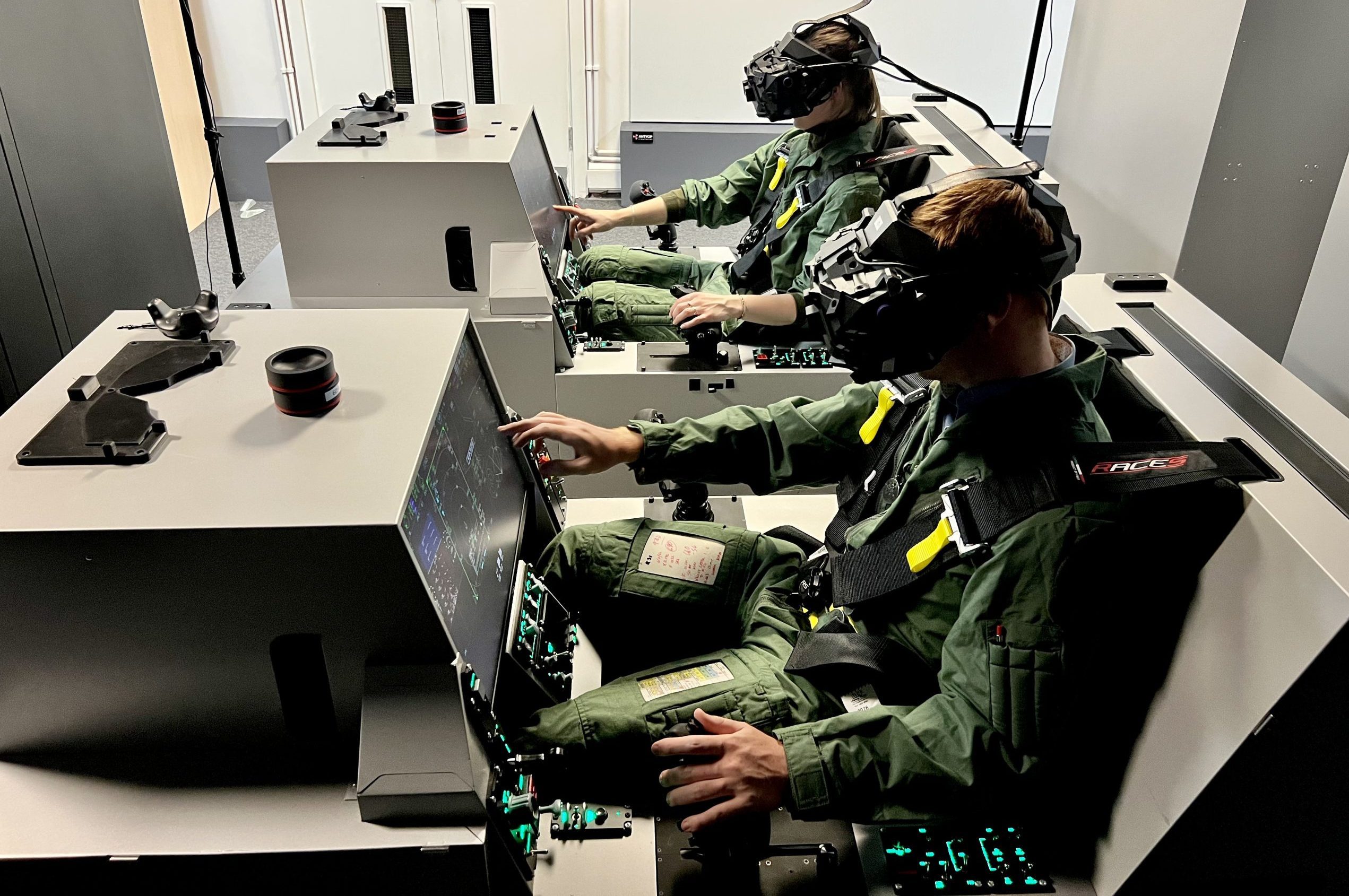The concept of simulation isn’t new to air combat training, but virtual reality (VR) is transforming its capabilities as a training medium.
Consequently, a modern air combat training system will include VR because it enhances the learning experience significantly.
Why Does the Military Use Virtual Reality for Training?
Armed forces must be properly equipped and trained. These are fundamentals.
However, training comes at a cost, in terms of time, resources and money. VR broadens the defence and military sector’s options, offering sophisticated but accessible training solutions to air, land and sea personnel.
VR training is scalable and relatively cheap compared with real-world training involving equipment and weapons in live exercises.
It’s also risk-free. Individuals can train for a range of demanding and dangerous scenarios without risk of injury to themselves or damage to costly military hardware.
Trainees can make mistakes, learn from them, and repeat exercises and manoeuvres until they get them right.
VR supports a more flexible, learner-driven approach, where the individual exercises a greater degree of autonomy over the learning process. Here, the trainee takes personal accountability for their development.
Then there’s the added convenience and efficiency VR offers – personnel can train anywhere and anytime.
How is VR Used in Air Combat Training?
A VR-based air combat training system provides a versatile and flexible platform for personnel. It simulates lifelike combat conditions, including terrain, weather conditions and hostile forces.
VR air combat training creates a highly lifelike, role-playing training environment.
Fully customisable, it offers multiple variations and options for trainees, creating different air mission and combat scenarios. This immersive, simulation training experience combines detailed, interactive visual displays with high-fidelity, 3D cockpit models.
This is air combat training with a difference. It bridges the gap between classroom and real-world learning, testing and measuring pilot capabilities precisely and rigorously while reducing training time and costs.
VR applies to training for specific missions and scenarios, alongside complex battlefield training.
Is Virtual Reality Good for Flight Training?
VR positions the trainee at the centre of the action, where they must follow strategies and make individual decisions that will have consequences for themselves and the outcome of the exercise.
The benefits for the individual trainee and the military are:
- VR is cost-effective – training is adaptable and scalable
- It’s high quality – advanced simulation packages provide demanding and thorough training scenarios
- It's immersive – the trainee experiences air combat as if it were real
- It’s iterative – exercises that would be costly, complex and potentially hazardous in real-life situations become core components in a repeatable learning process
Air Combat Training Systems from ST Engineering Antycip
By partnering with advanced tech providers, we deliver highly advanced, customisable air combat training solutions to the defence and military sector. Our past projects include air mission training and fighter simulations for the RAF, Eurofighter and F35 aircraft.
- Working with Nova Systems, we helped develop a prototype capability concept demonstrator (CCD) for RAF mission training and enabled the F-35 to interact with military simulators in a synthetic training environment for the first time.
- Alongside our partners, Diamond Visionics LLD, we worked with Airbus Defence and Space to install their high-fidelity simulator. They can use this for advanced fighter simulations.
We develop role-specific VR training solutions for air missions and combat scenarios. For more details or to talk about your requirements, please contact us.




















